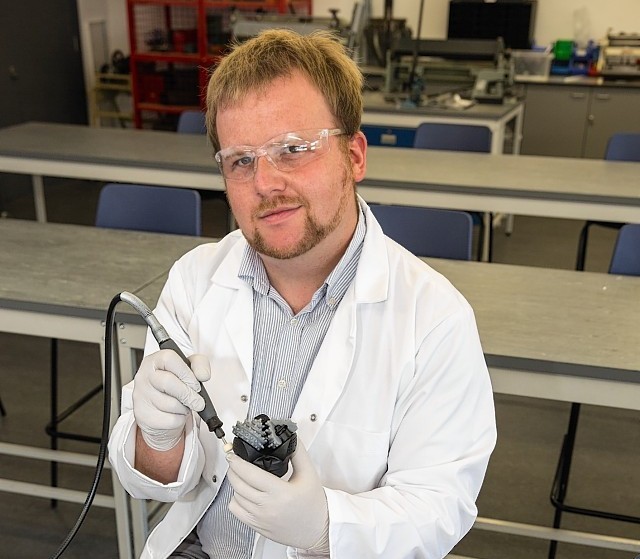A former North Sea drilling engineer who took a redundancy package has launched a 3D printing business aimed at the oil and gas industry.
PlastiPrint 3D is the brainchild of Gary Cairns who described the venture as a cost-effective way to create working models on demand.
Mr Cairns said: “Until now, turning 2D designs into 3D models has been an expensive and time-consuming process, but 3D plastic printing makes it much easier to evaluate products, take them to market, and to train staff on their use.
“The oil and gas industry lends itself particularly well to this technology because so many products are simply far too unwieldy to showcase easily.
“When you 3D print them to a smaller scale, you can take them right into your client’s office.”
The PlastiPrint 3D process involves building up a solid model in minute layers, as thin as 25 microns.
“We’re among the very few suppliers able to print at such a fine resolution, allowing complex structures to be scaled without loss of detail,” said Mr Cairns, adding that clients are already also using the process to troubleshoot.
“Our 3D models are perfect for brainstorming sessions and identifying potential issues.”
Mr Cairns joined BP as a North Sea drilling engineer after he graduated in 2011 with a Masters in Mechanical Engineering,
While working offshore, he noted that most downhole and subsea tools are commissioned without the operator ever seeing what they look like or fully understanding how they work.
“This easily creates a disconnect that can affect how productively the equipment is used, but we can close that knowledge gap by adding 3D models to the training process,” he said.
Mr Cairns first began researching the technology after a chance remark from a frustrated colleague who observed that being able to print in 3D would greatly simplify life in the workplace.
When BP invited staff to apply for voluntary redundancies last autumn, he decided to go it alone and went on to launch PlastiPrint 3D from a production base near Mintlaw.
“Even in today’s challenging market, I am confident there is a strong demand for what I am offering, and my goal is for PlastiPrint 3D to become known industry-wide as the go-to provider of top quality 3D printing services,” he said.
